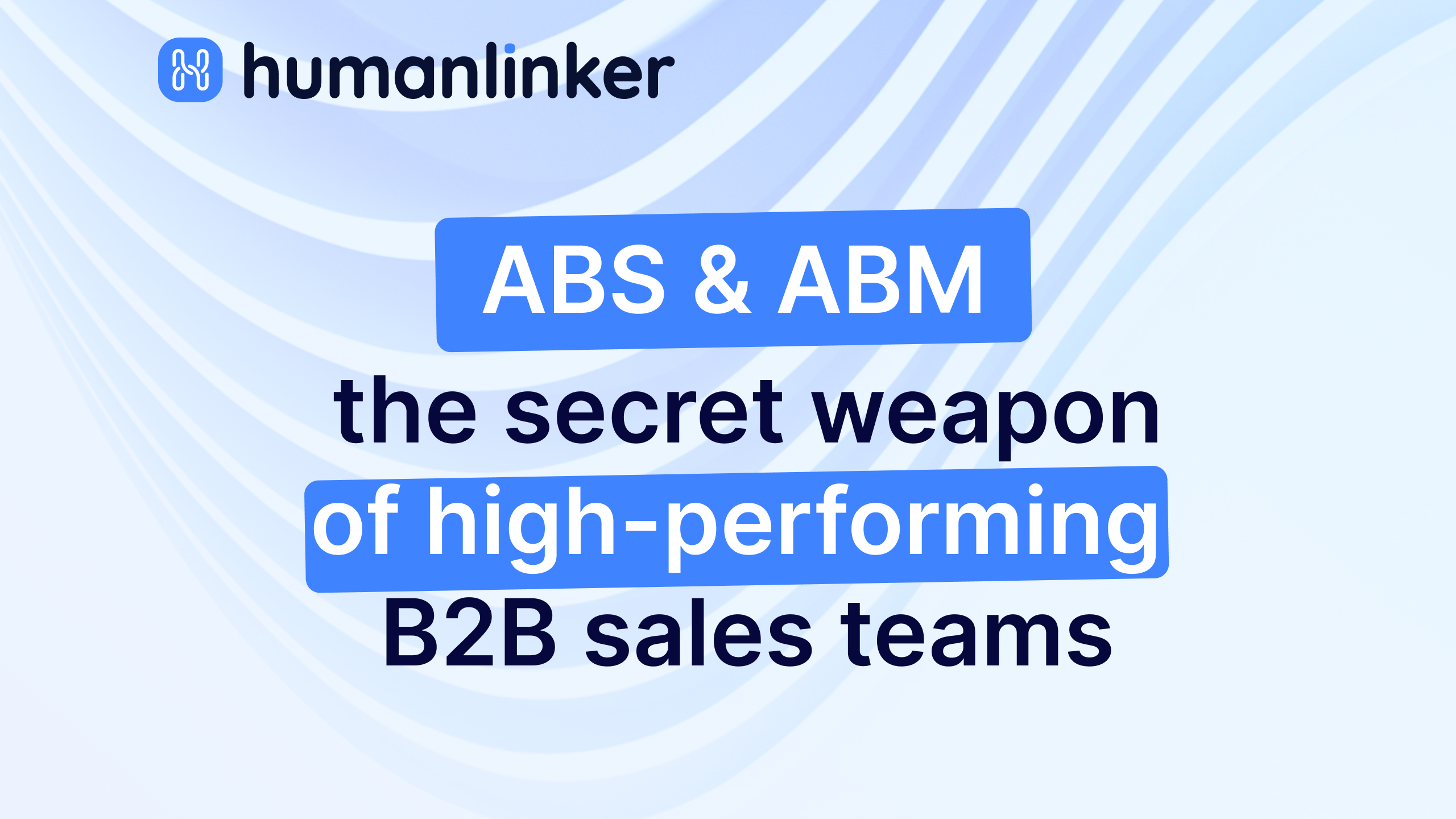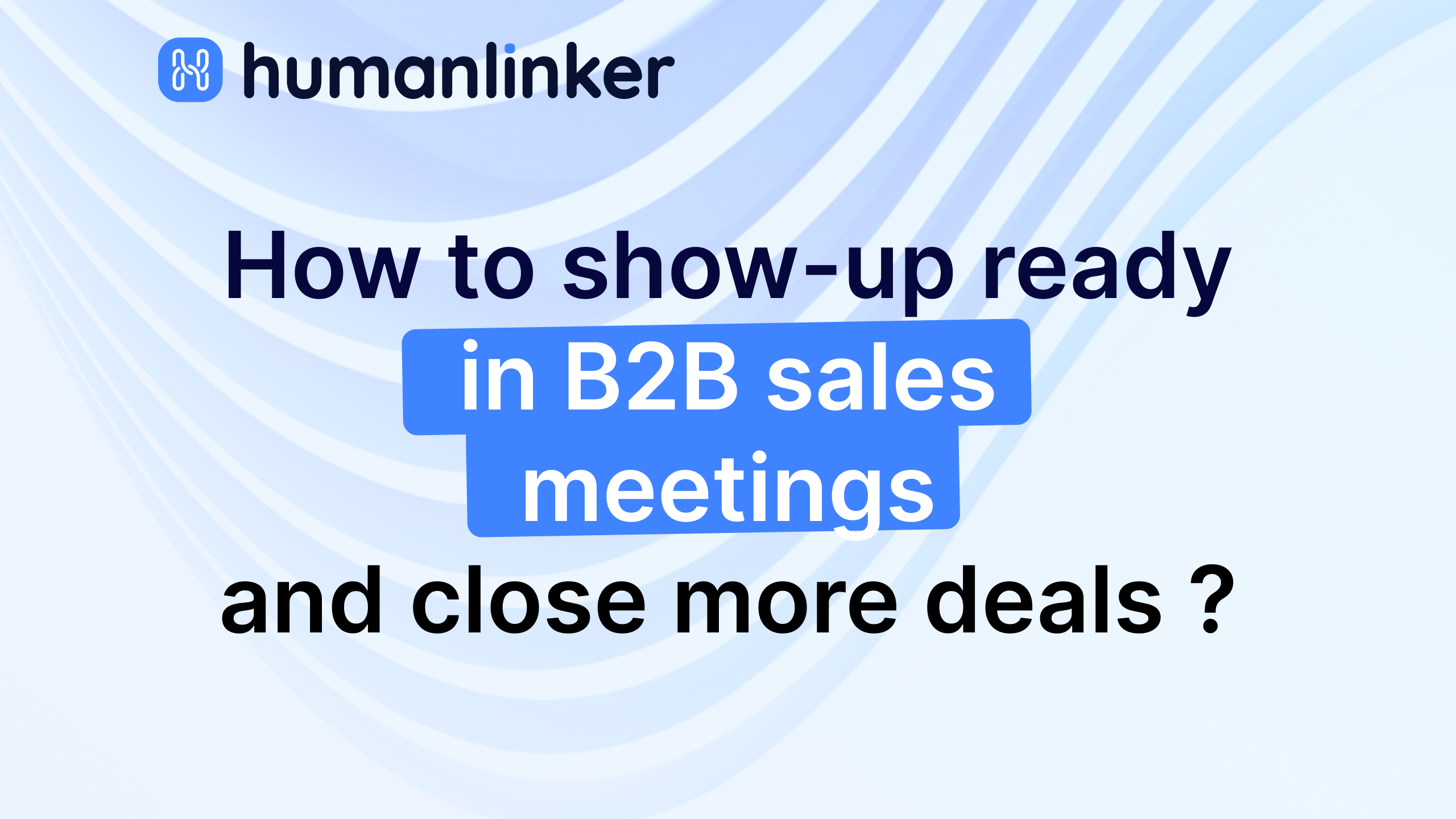AI in B2B sales: the top trends to improve conversion and customer retention

Artificial Intelligence (AI) is no longer just a buzzword. It has become an operational growth lever in B2B sales cycles. From prospecting to retention, AI is reshaping processes and redefining the role of salespeople, turning them from hunters into augmented strategic advisors.
In this article, we review the major AI trends in B2B sales with stats, industry insights, and best practices to help sales teams convert more and retain better.
1. AI to identify the right prospects faster
What’s changing
In the past, qualifying a lead meant digging through databases, manually spotting weak signals, and testing enrichment criteria. Today, AI automates this filtering phase by:
- Analyzing thousands of firmographic data points (size, industry, location)
- Detecting buying signals (funding rounds, key hires, press mentions)
- Generating similar prospect lists through lookalike modeling
Key stats
SuperAGI reports that 75% of sales teams saw productivity gains with AI, while 60% reported higher conversion rates.
Salesforce found that 83% of AI-enabled sales teams reported revenue growth, compared to 66% of those without AI.
Testimonial
“We implemented an AI tool that scans LinkedIn, legal filings, and industry databases. Our SDRs used to spend 30% of their time qualifying leads manually; today that time has been cut in half.” — Head of Sales at a SaaS scale-up
👉 Bottom line: AI focuses effort on high-potential prospects instead of random outreach.
2. Hyper-personalization that drives conversion
What’s changing
B2B sales cycles are longer, involve multiple decision-makers, and demand tailored engagement. AI enables:
- Messages adapted to the company’s industry (e.g., FinTech vs Healthcare)
- Custom insights aligned with strategic priorities (regulation, growth, digital transformation)
- Adjusted tone depending on the persona (directive vs consultative)
Key stats
Salesforce data shows personalization powered by AI is one of the strongest drivers of buyer engagement.
HubSpot’s Sales Trends 2025 report confirms that sellers increasingly see AI as a differentiator.
Testimonial
“By leveraging AI-enriched firmographic data and suggested pain points, our personalized emails doubled open rates compared to generic campaigns.” — Head of Sales, B2B SaaS
👉 The result: more relevant messages, higher reply rates, and better-qualified conversations.
3. The AI copilot: a true sales ally
What’s changing
AI is not here to replace salespeople but to act as their copilot. It supports reps by:
- Preparing meetings (account research, history, recent news)
- Suggesting sharp discovery questions
- Anticipating objections and providing talking points
- Automatically generating structured meeting notes with clear next steps
Key stats
The SalesRLAgent (2025) achieved 96.7% accuracy in predicting conversion likelihood and reported a 43.2% lift in conversions when sellers followed its recommendations.
Martal reports that up to 80% of SDR tasks (prospecting, booking meetings) can already be automated with AI under human supervision.
Testimonial
“Since our AI copilot briefs us 30 minutes before a meeting with key talking points, account risks, and data, our close rate has increased by about 15%.” — Sales Director, SaaS
👉 Every meeting becomes sharper, more strategic, and more impactful.
4. AI to boost retention and upsell
What’s changing
In B2B, especially SaaS, retention and upsell are critical to growth. AI helps by:
- Detecting churn signals (decline in usage, support tickets, login drop-offs)
- Identifying clients ready for upsell (new modules, higher tiers)
- Orchestrating personalized retention and upsell campaigns
Key stats
Retaining a customer is 5x cheaper than acquiring a new one.
HubSpot reports 65% of CMOs plan to increase AI investment in 2025.
Salesforce found that AI-enabled sales teams consistently outperform others in revenue growth.
Testimonial
“With our AI-powered churn detection, we identified 10% of at-risk clients six months ahead and launched proactive campaigns. Our churn dropped by 30%.” — Head of Customer Success
👉 AI becomes a revenue shield and a driver of expansion revenue.
5. Real-time insights and data-driven sales management
What’s changing
Static monthly reports are no longer enough. AI offers real-time visibility, including:
- Alerts on anomalies (stalled pipeline, delayed deals)
- More accurate revenue forecasting through machine learning
- Clear insights into which channels perform best
Key stats
Salesforce highlights stronger forecasting accuracy among AI adopters.
HubSpot’s Sales Trends 2025 emphasizes AI adoption as a critical differentiator in sales performance.
Testimonial
“Our AI dashboard flags if a pipeline has been idle for more than 10 days or if a key deal moves backward. We can react immediately instead of waiting until the month’s end.” — VP Sales, Scale-up
👉 Sales management becomes agile, proactive, and data-driven.
6. Smart automation vs blind automation
What’s changing
Basic automation (bulk email sequences, generic follow-ups) is outdated. AI enables:
- Personalized outreach at scale
- Smarter orchestration across channels (email, LinkedIn, calls)
- Error prevention (avoiding follow-ups to already-converted leads)
Key stats
HubSpot confirms AI adoption separates high-performing sales orgs from laggards.
Martal reports AI agents already handle up to 80% of SDR workflows in some companies.
Testimonial
“Instead of sending fixed sequences, our AI tailors the message based on engagement signals. We’ve seen a 25% boost in responsiveness.” — Growth Manager
👉 Automation becomes human-like, subtle, and highly effective.
7. Product-led growth (PLG) powered by AI for software companies
What’s changing
PLG, or product-led growth, is especially relevant for software and SaaS providers, where the product itself drives acquisition. AI enhances PLG by:
- Spotting freemium users with high engagement
- Notifying sales teams when users are ready to upgrade
- Triggering upsell campaigns automatically
- Using product behavior as a core scoring signal
Key stats
Gartner defines PLG as a strategy where user engagement converts directly into buying intent, with AI helping sellers close deals.
Gartner also highlights emerging solutions like StoryScale that enable self-guided demos, accelerating PLG adoption.
Testimonial
“Our SaaS product now leverages AI to detect power users in free tiers. When accounts hit certain usage thresholds, targeted upgrade campaigns are triggered automatically.” — Chief Product Officer, SaaS
👉 For software vendors, the PLG + AI duo is a growth powerhouse.
8. Limits and success conditions
What to watch
- Data quality: poor data leads to poor AI outcomes
- Adoption: tools must integrate seamlessly into sales workflows
- Human touch: authenticity remains key in B2B relationships
- Ethics and transparency: prospects must trust how AI is used
Testimonial
“We deployed an AI scoring system without revisiting our segmentation. The results were disappointing. Once we cleaned the data and retrained the model, outcomes improved dramatically.” — CRO, SaaS company
👉 AI should be seen as an accelerator of human potential, not a magic box.
Conclusion: AI and humans are the future of B2B sales
AI is reshaping the fundamentals of B2B sales. It improves targeting, drives personalization, equips reps with copilots, reduces churn, sharpens sales management, and makes automation smarter.
For software vendors, it supercharges PLG strategies.
But AI alone is not enough. Success requires high-quality data, real adoption, and a balance between technology and the human touch.
👉 The sales professionals who embrace AI will not be replaced. They will become super sellers: faster, smarter, and more effective than ever.

AI in B2B sales: the top trends to improve conversion and customer retention

When ABS Meets ABM: The Power Duo to Transform B2B Sales




Find out in 30 minutes how Humanlinker can help you achieve your goals.



